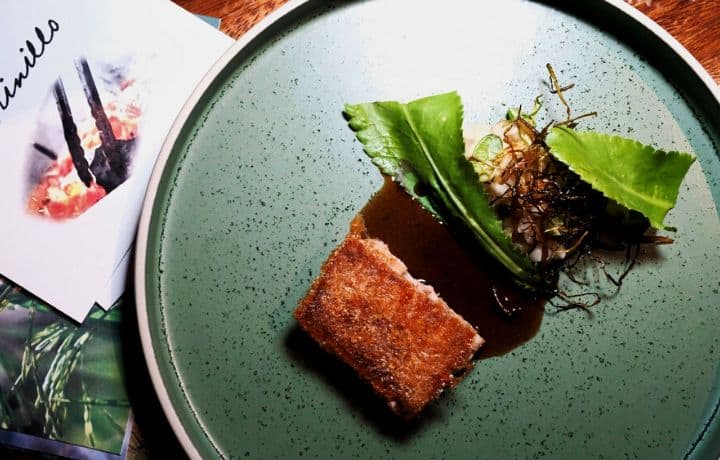

.jpg)
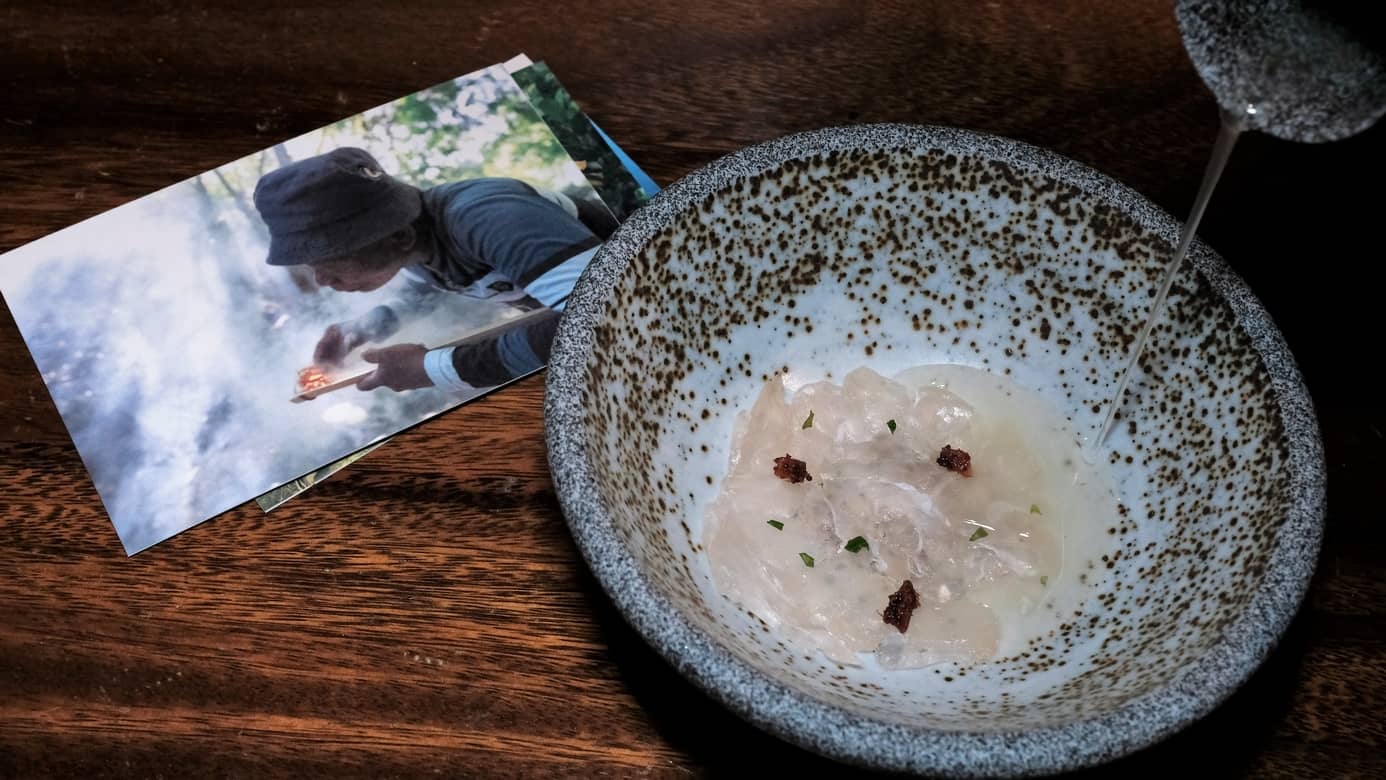

.jpg)
.jpg)
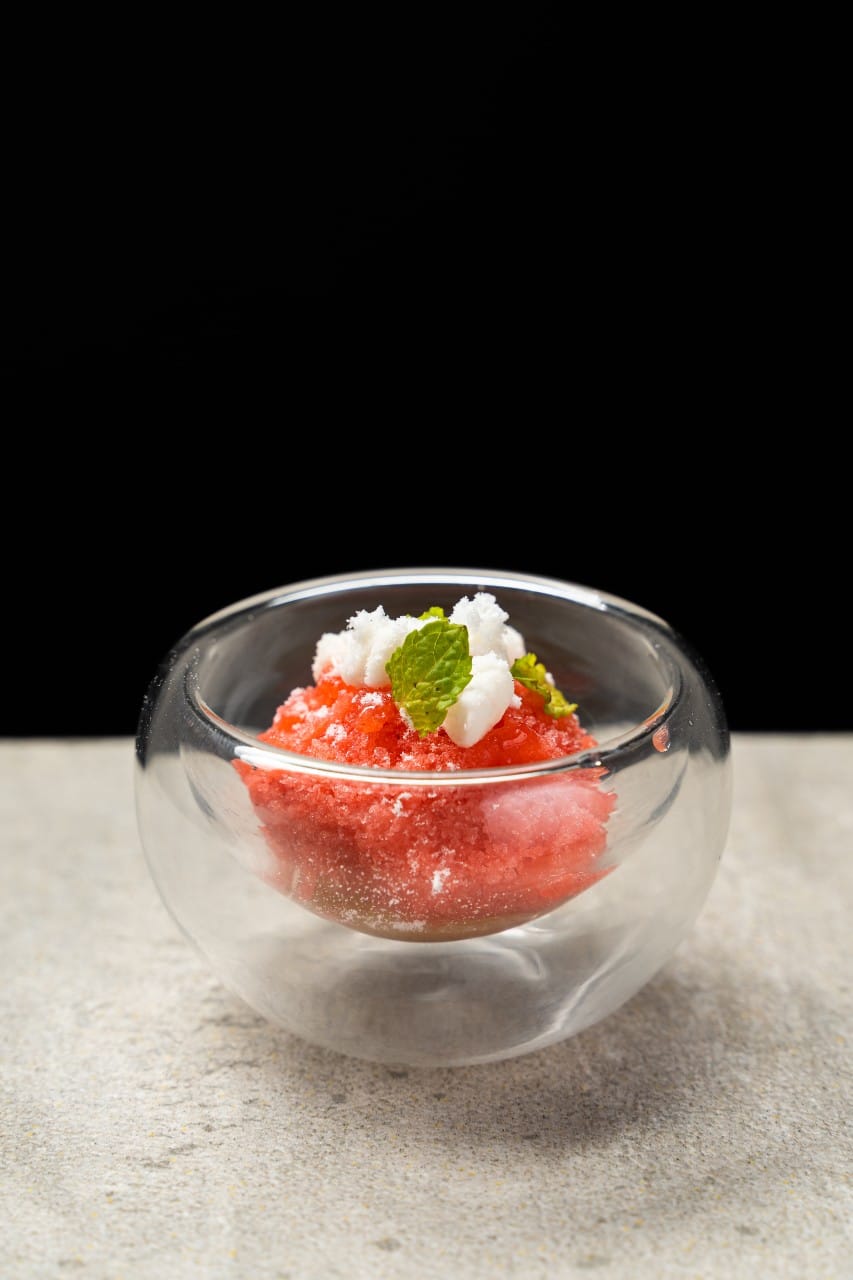
.jpg)
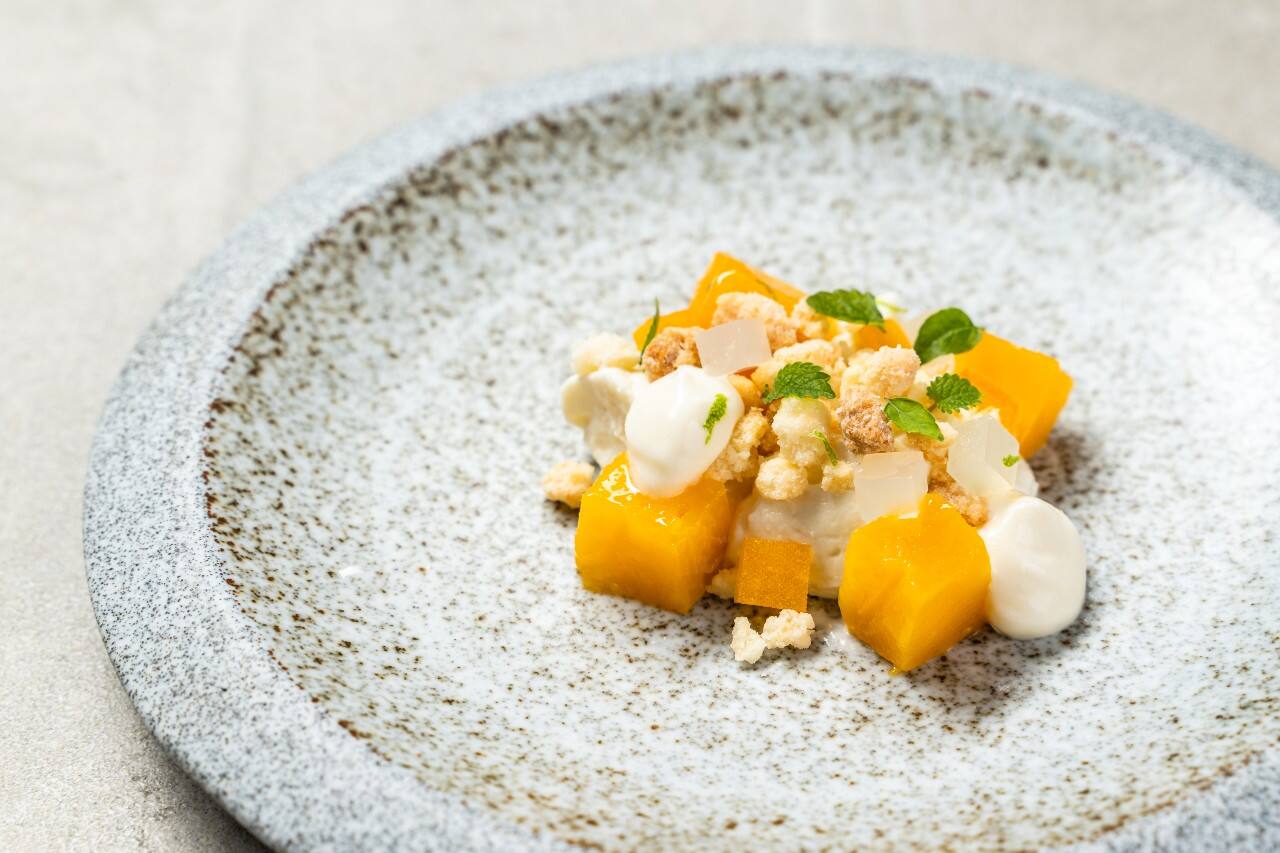
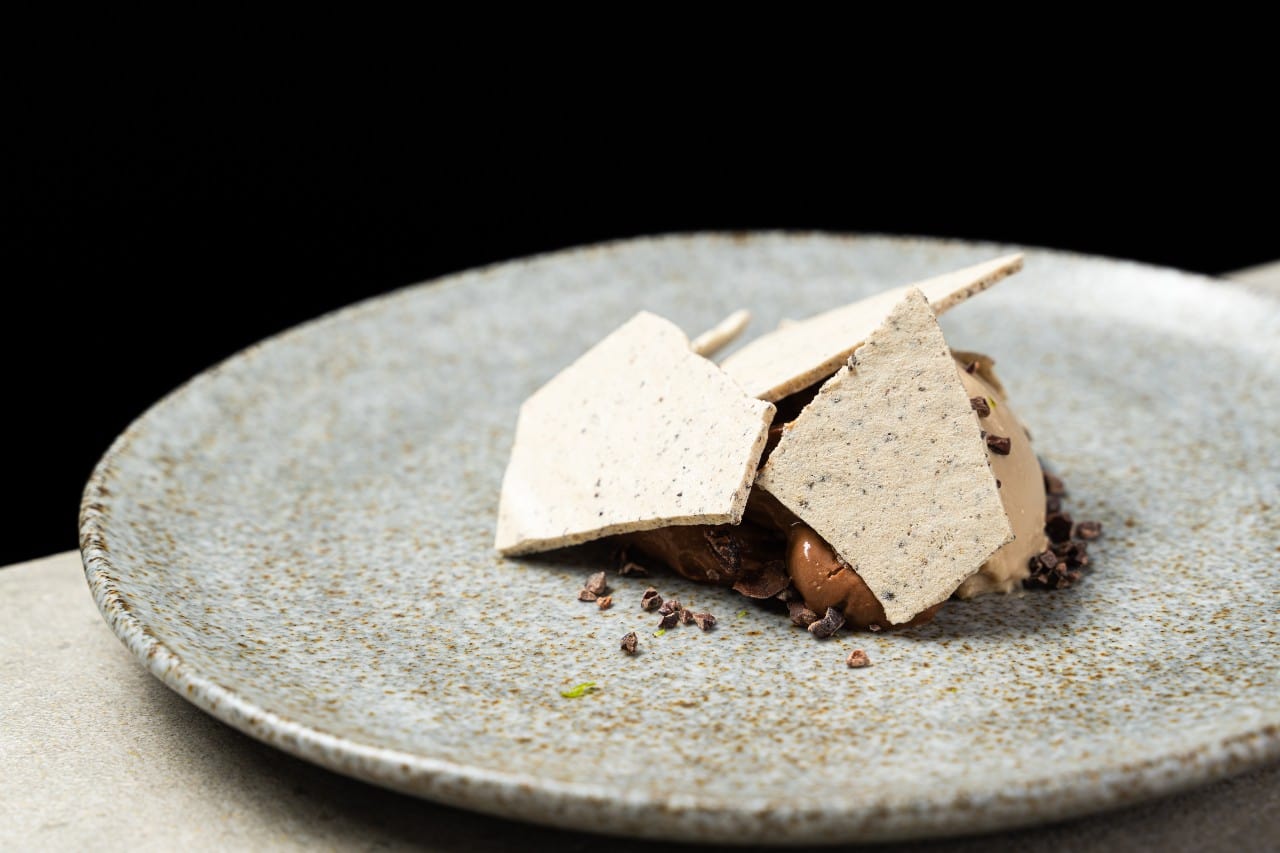
1st Course: Siruma | Kinilaw - Inspired by Chef Chele’s visit with Kuya Tikoy and Ate Jen of the fishing village Siruma in Camarines Sur, Bicol, the first course was a Kinilaw of mackerel with house-made pineapple vinegar as the souring agent, accompanied by boiled onions, a roasted pineapple sorbet, and micro cilantro. Wine: Masottina, Prosecco Collezione 96 Brut. A great pairing as it rounded off the sweet-sour bite with acidity and just the right amount of bitterness. Cocktail: Clarity (clarified tomato water, vodka, celery). Each cocktail pairs with two courses, and it was a challenge to stop drinking this ‘bloody mary’—as it was not only refreshing, but the tomato flavor balanced the sweetness of the dish with some earthy flavors.Gallery by Chele
2nd Course: Camalig | Pinangat - Still in Bicol, Chef Chele discovered the intricacies of Pinangat in Camalig, Bicol courtesy Chef Ato from Socorro’s Restaurant. His Pinangat is a souvide lobster with aromatics, wrapped in kale leaves, served in a broth of smoked coconut milk and seafood stock, topped with fried alamang, and drizzled with cilantro oil. This is not pinangat in the strictest sense as there’s no taro leaf, but it did pack umami and unctuous seafood flavor aplenty, especially with the fried alamang contrasting in texture and flavor with the perfectly cooked lobster. Wine: Von Der leyen Riseling Kabinett 2019. The slightly sweet wine took away some of the more lingering flavors of the umami-rich alamang. Cocktail: Clarity. Bloody Mary’s are great paired with lobster for a reason. Gallery by Chele
3rd Course: El Kabayo | Foraging - Foraging was all the rage in many parts of the world, but as the HerEATage documentary would remind us—our tribal brothers and sisters have been doing it since time immemorial. Guided by Albert with his trusty bolo in hand, chef Chele went foraging in El Kabayo, Bataan. A layer of snapper cured with kafir, chilies, and ginger, punctuated with little slivers of tibig (a local fig) and pingol bato (leaf, souring agent) brought together by a viscous Banaba kombucha poured tableside. For as much as chef was roughing it up in the forest, the result of his trip was a smooth spoonful from start to finish. Wine: Hakurakusei Junmai Ginjo Sake. Served chilled, this sake’s grapefruit notes stand up to and balances the sweetness of the dish.Cocktail: Gin Pili (Proclamation gin, pili orgeat, lime). With this course, the cocktail amps up the nutty sweet flavors of the fish. Gallery by Chele
4th Course: Cabiao | Buro - For this course, Chef Carlos interprets Buro after a visit with Jake Bautista at Cabiokid, a permaculture site in Cabio, Nueva Ecija, which of course—plants rice. Buro which is the process and the product of fermenting rice with meats sauteed with garlic, onions and tomatoes is one of my favorite things in the world. My dinner partner would never touch it though, so this was an exciting course for me personally. Grilled Emperor fish (White Maya-Maya) in a banana leaf pouch, on a generous spoonful of sautéed red rice buro and aromatics, with pickled onions, and topped with fresh and grilled mustard leaves, it was unmistakably buro with the red rice gave it a nutty undertone and didn’t taste overly fermented. I wanted to lick the plate clean and was eagerly anticipating the leftovers from my dining partner’s plate, but alas—he finished it.Wine: Stemberger Zelen. Using the Zelen grape variety, this wine had fruity notes with smoke undertones. It’s a funky wine paired with funky food. Cocktail: Gin Pili. The buro was tart with tomatoes, so the sweetness of the drink tempers that. A great pairing. Gallery by Chele
5th Course: Hermosa | Binuho - Tribal traditional cooking and the challenges faced on preserving and passing it on was the focus of Chef Carlo’s visit with Ms. Erlinda of the Aeta communities in Hermosa, Bataan. Binuho or cooking in bamboo is one of those traditions, while it’s not exactly replicated in the restaurant, the clean flavors that bamboo cooking evokes were in this course of steamed ulang and vegetables in a clear bilukaw soured broth. Wine: Gernot Heinrich Zweitgelt 2016. Earthy notes of the wine complement the sour broth. Cocktail: Perfume (pisco, blue leaf flower, bay leaf). A sip grounds the dish with its slight bitterness while adding sweetness thanks to the pisco. Gallery by Chele
6th Course: Silang | Cochinillo - Silang is not top of mind when we think Cochinillo, but Henry Brolagda’s Lucciole Farm in Silang, Cavite featured in the HerEATage docu proudly grows organic native pigs primed for great lechon and cochinillo. In Chef Carlos’ dish, cochinillo is served with adlai and prepared non-traditionally – in a souvide first then roasted, with the usual stuffing flavors (sibujing/sakurab, lemon grass, ginger, etc) imbued instead into the pork jus-based sauce. Wine: Denis Jamain Domaine de Reuilly Les Pierres Plates Rouge. Pinot Noir and pork’s always a great pairing, and this wine is extra friendly. Cocktail: The Galeon (tecquila, watermelon, hibiscus, habanero) The tart and zippy flavors of this cocktail pairs well with pork. Gallery by Chele
7th Course: Iskrambol - After tasting Iskrambol in the restaurant’s teambuilding, Chef Chele created his own version --- strawberry sherbet with the lightest touch of banana essence with pieces of meringue and housemade dayap marshmallows. Tart and sweet, while the sherbet was much too smooth to be an iskrambol, it was a treat to eat all the same.Gallery by Chele
8th Course: Camarines Sur | Laing - For our main course, Chef Chele takes on the iconic Laing after a trip to a taro farm in Camarines Sur, Bicol with Rica Buenaflor of Que Rica. A revelation. Who knew beef and laing would go so well together? Like a deconstructed beef rendang but with laing flavors, elevated to one of my best bites of the year thanks to the punchy addition of the chimichurri. Wine: Vina Pedrosa Crianza Ribera del Duero. The fruity top note of this Crianza works with the sweetness of coconut milk, and the tannins arrive rather smoothly. Cocktail: Potwashed (latik, rum, cacao) This course has my favorite cocktail, dish and pairing of the night. It accentuated the sweetness of the coconut and the smoke/dried element of the taro, while being boozingly delicious on its own. Gallery by Chele
9th Course: MNL | Mango - For our first dessert, a coconut panacotta was dotted with fresh mango, streusel, lime gelee, mint and thai basil. A creamy and sweet counterpoint to the previous savory coconut dish. Cocktail: Halaya (vodka,ube,coconut) An alcoholic dessert that tasted of ube (thanks to housemade purple yam syrup) with the barest hint of toasted coconut, I enjoyed this course 3x more with this cocktail pairing. Gallery by Chele
10th Course: Amadeo | Coffee - Coffee textures was inspired by Chef Carlos’ trip to Amadeo, Cavite with Chit Juan, the president of the Philippine Coffee Board. Honoring the long journey of coffee from bean to cup, the course explored highlighting the coffees in different preparations from a Liberica coffee ganache with white chocolate and cream, a Robusta coffee meringue, to an Excelsia coffee ice cream. Wine: Quinta da Romaneira Fine Tawny Port. This port offered blackberry notes and sweetened this non-sweet coffee dessert course. Cocktail: Halaya. The cocktail added that trademark ube nutty sweetness to the dessert. Gallery by Chele




.jpg)
 (1).jpg)